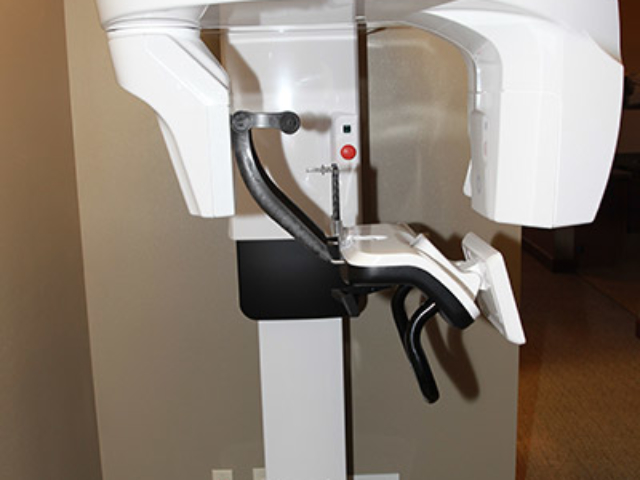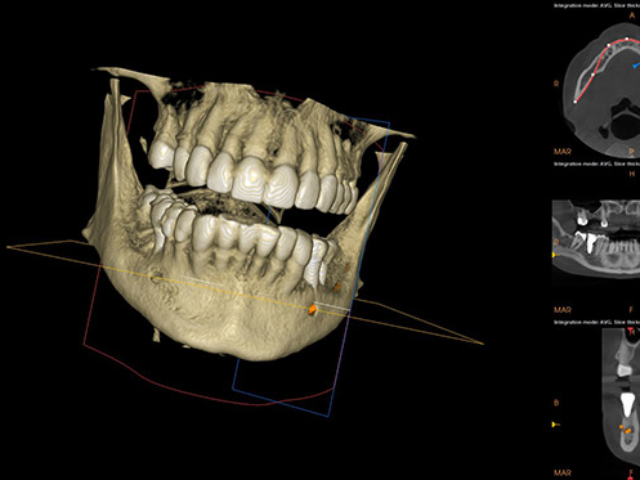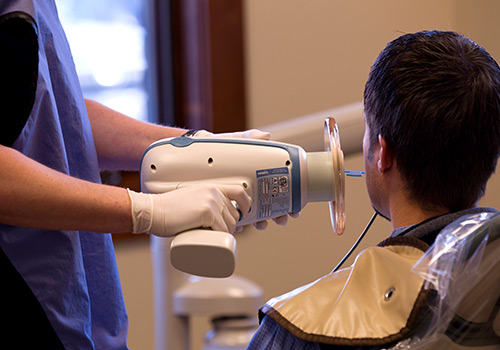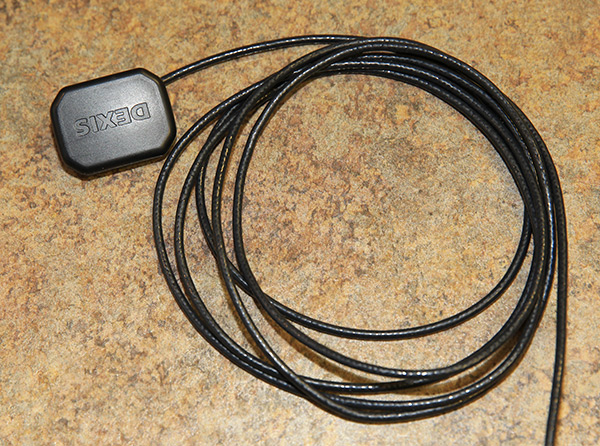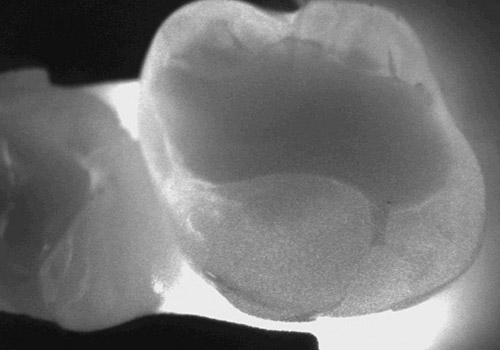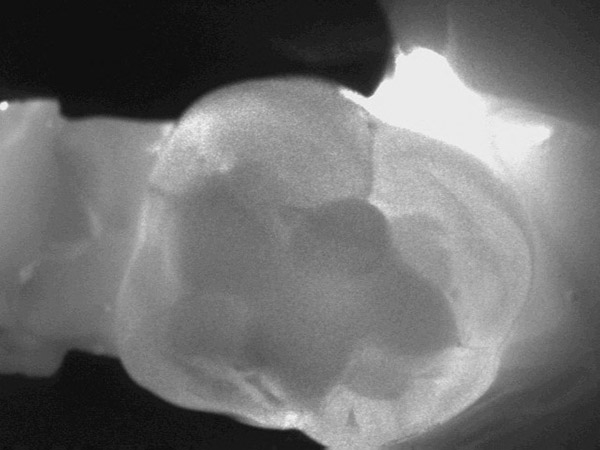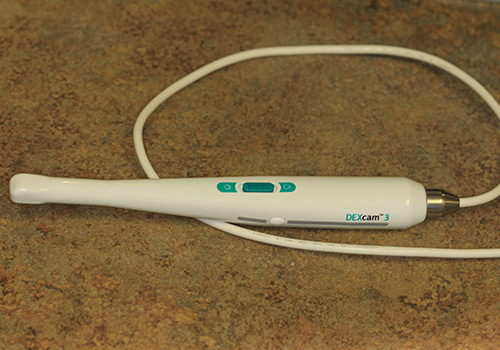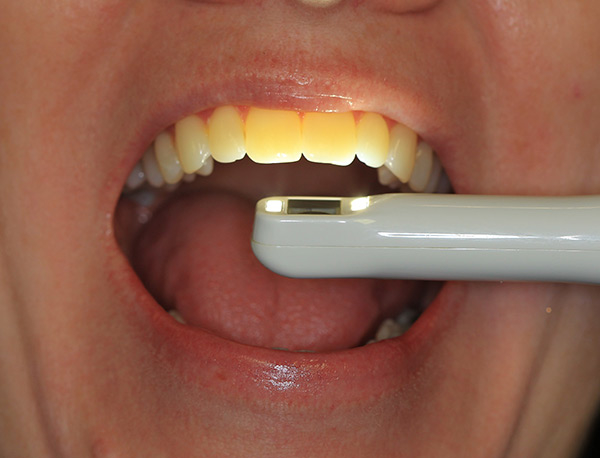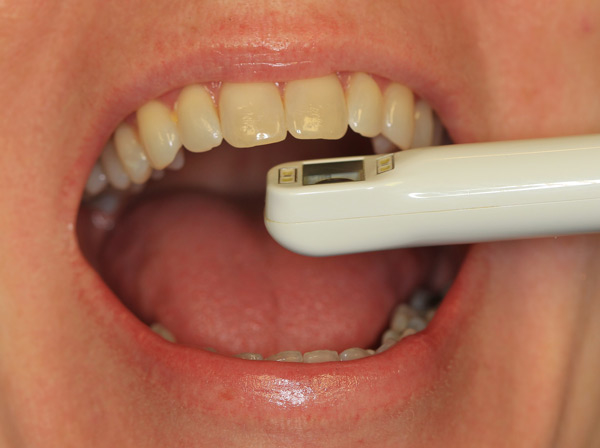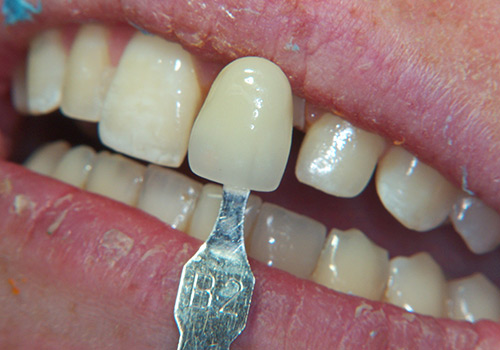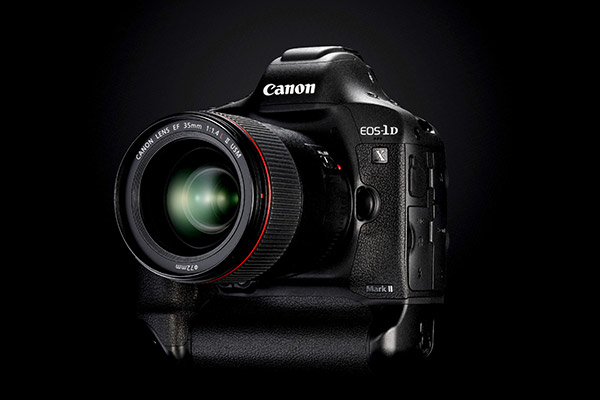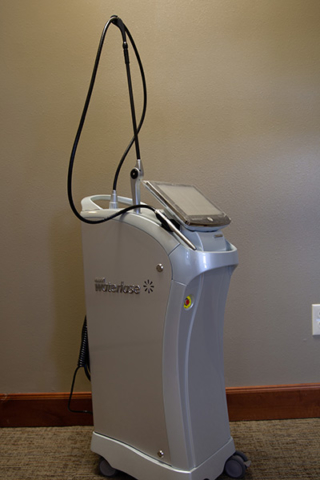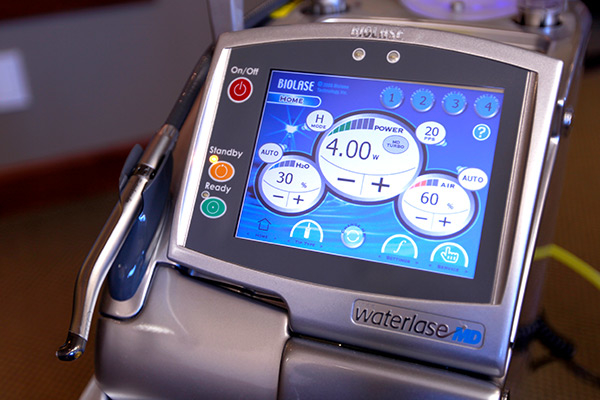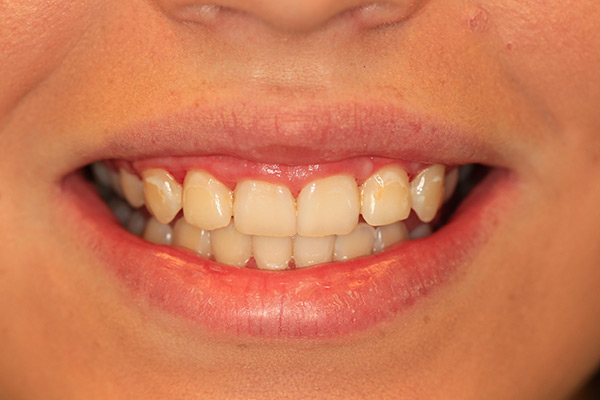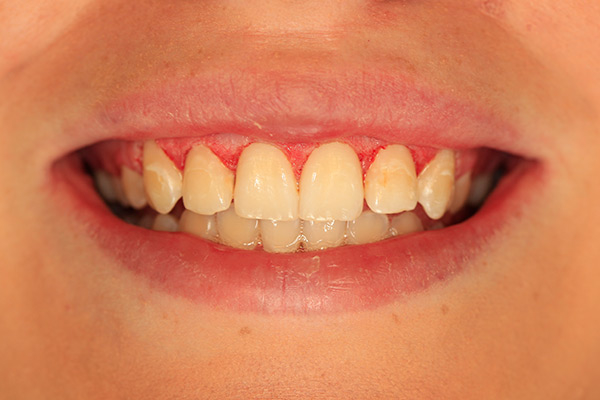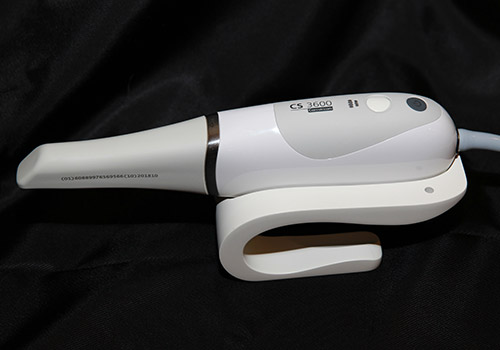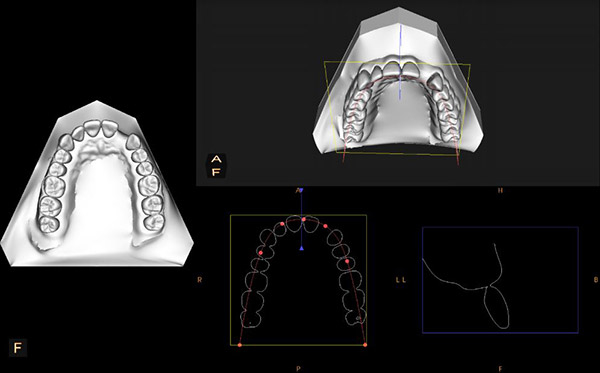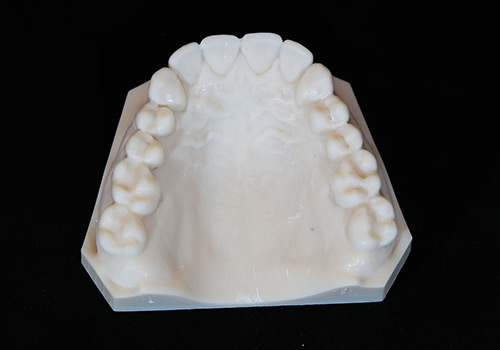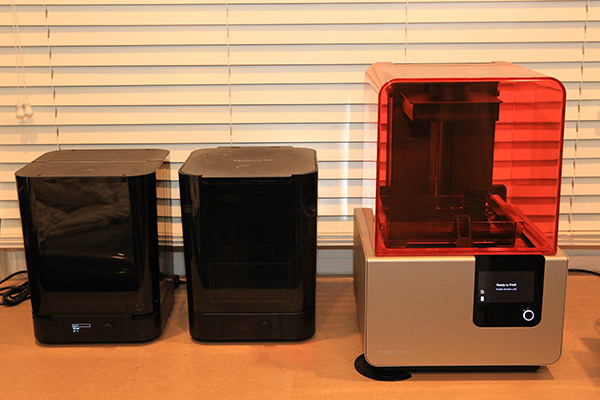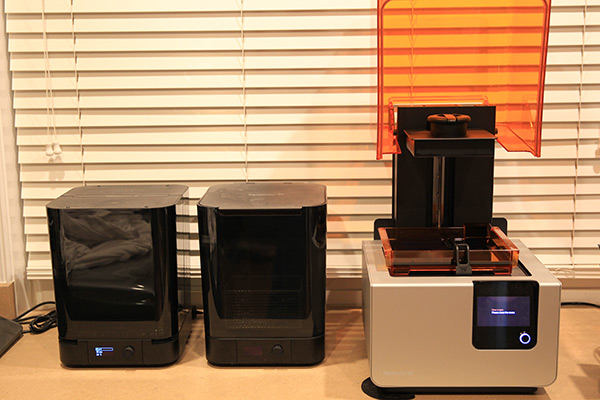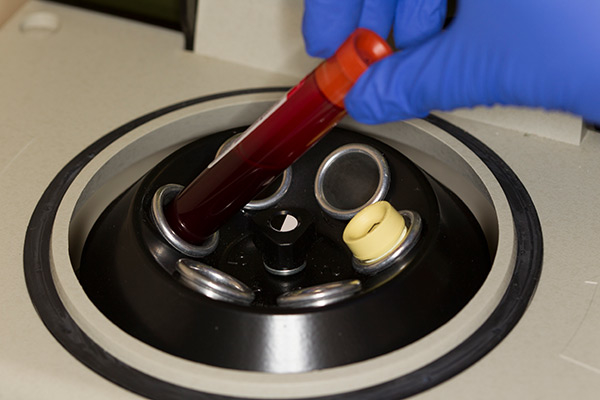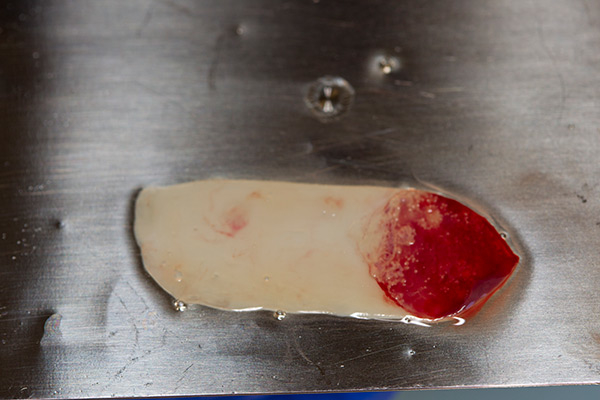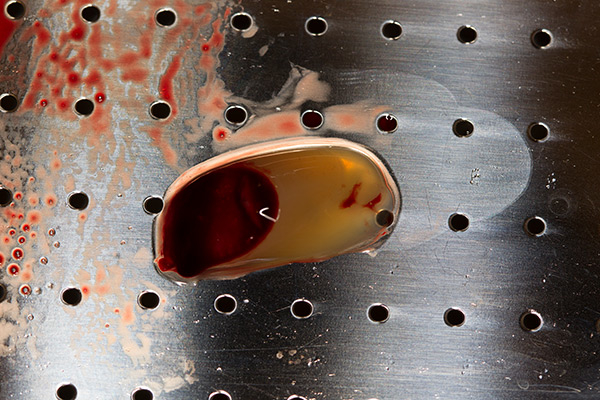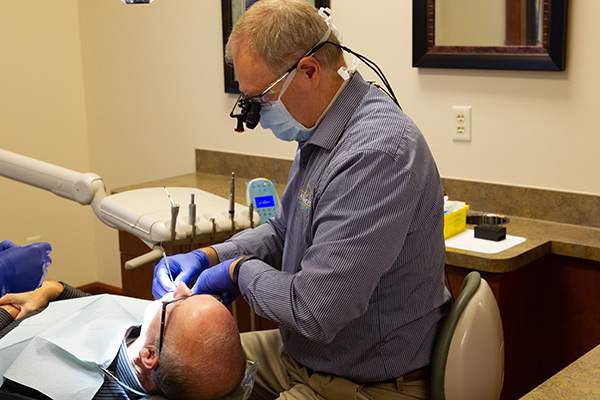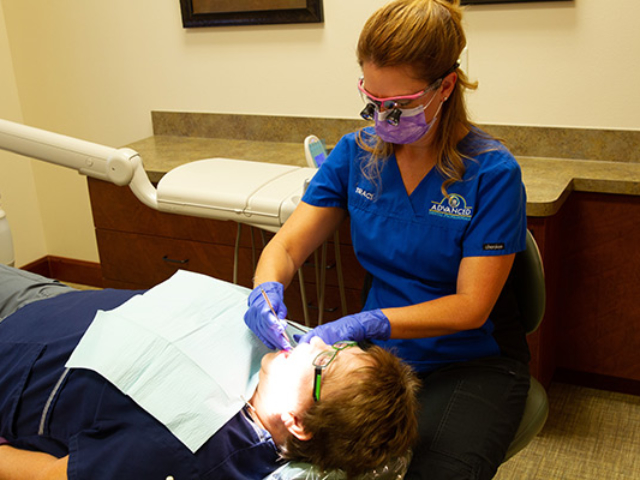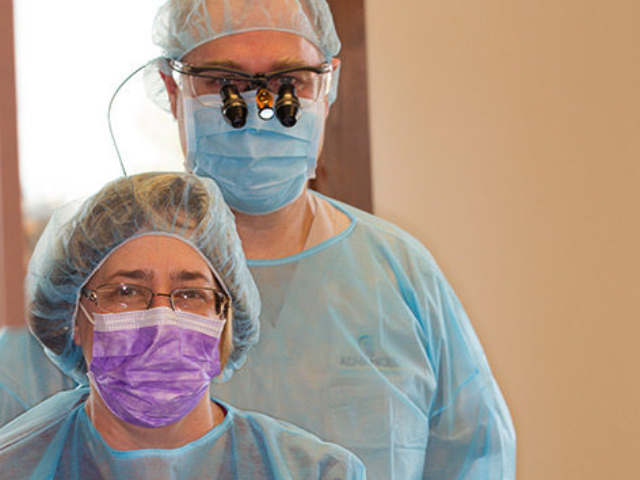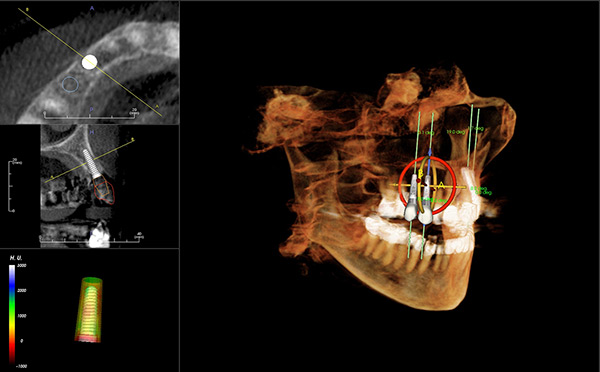“Technology has changed the world… see how it can change your life!”
We are constantly seeking to improve our knowledge and discover new technology to help us give you the best service and experience that you deserve.
Our goal is to provide cutting-edge technology rooted in trust and honesty. If we can make anything more precise, comfortable, affordable and longer lasting for you by using new technology, we want it in our office!
Benefits of technology:
- Patients can see the steps and envision themselves with final restorations before they start
- Gives patients a more defined representation of final restorations on their face and not a model
- Patients can become emotionally committed to the outcome
- Patients can find their smile
- Patients are more involved in decision making to ensure they are happy at the end of their treatment
Cone Beam CT Scanner (CBCT)
WHAT IT IS:
Also known as, cone beam computed tomography, is an imaging device used to capture high resolution digital 3D images of the head. It is an x-ray that is taken as it rotates around the patients’ head.
WHAT IT IS FOR:
A 3D image that is produced by a CBCT is useful in many ways, from implant placement to TMJ problems. It is very useful in diagnosing difficult problems and planning surgical procedures.
BENEFITS:
Unlike a flat or 2-dimentional x-ray, a CBCT can be rotated and be seen at all perspectives allowing the dentist to see things that may be hidden by a traditional x-ray. Digital CBCT takes less x-rays and are higher resolution than its predecessor.
Panoramic Radiography
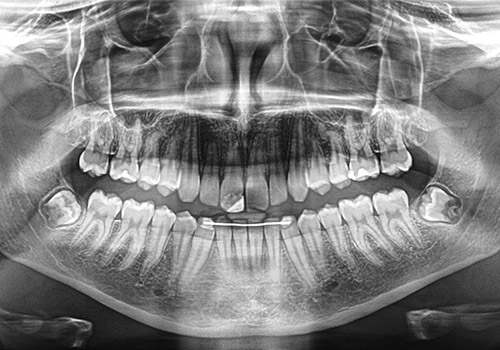
WHAT IT IS:
A two-dimensional (2D) dental x-ray examination that captures the entire mouth in a single image, including the teeth, upper and lower jaws, surrounding structures and tissue.
WHAT IT IS FOR:
Detecting position of fully emerged and/or emerging teeth, helps identify impacted teeth, can aid in diagnosis of tumors and/or signs of oral cancer, help with orthodontic assessments, diagnosis of wisdom teeth impaction, diagnosis of advanced periodontal disease, assessment of the jaw joint, used in treatment planning.
BENEFITS:
Safer than other types of x-rays because of less radiation, covers wider area than conventional x-ray, painless, fast, easy to perform.
Digital Imaging
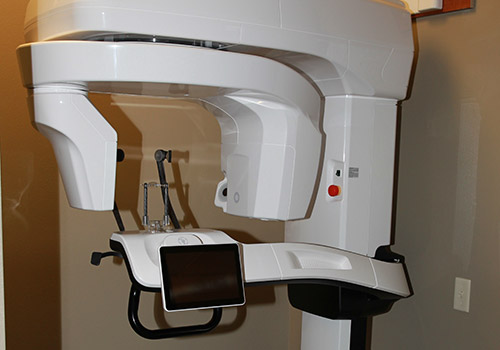
WHAT IT IS:
A way to capture images of tooth, bone and soft tissue. This can be done using x-rays, or LED lighting.
WHAT IT IS FOR:
Help in the diagnosis and treatment of the dental patient and are readily stored in the patient’s chart. An image will show decay of a tooth or lesion in the bone.
BENEFITS:
Digital images require less radiation and are quicker than other traditional methods. These are high resolution, allowing visualization of all areas of the mouth for quick and accurate diagnosis.
Nomad Handheld X-Ray Unit
WHAT IT IS:
A handheld, battery-powered intraoral x-ray system
WHAT IT IS FOR:
Producing high-quality radiographs with digital sensors
BENEFITS:
Lightweight, has internal x-ray shielding a backscatter shield to protect the user from direct or scattered radiation, allows user to stay with the patient during the process, good for kids
Dexis CariVu
WHAT IT IS:
A Dexis CariVu is a compact and portable device with a small camera used to detect caries “cavities” and cracks in teeth.
WHAT IT IS FOR:
A Dexis CariVu uses transillumination technology to allow the doctor to see through the tooth to detect any cavities or cracks. The healthy structure of the tooth appears light or transparent and the cavities or cracks absorb light and appear dark.
BENEFITS:
The CariVu allows the doctor to see more than radiographs can show. The images are easy to read and understand and can be saved directly in the patient’s chart just like traditional x-rays. Unlike traditional x-rays, the CariVu uses non-ionizing radiation which is safe for children and pregnant women.
Intraoral Camera
WHAT IT IS:
A tiny digital camera used to capture digital images of the inside of the mouth
WHAT IT IS USED FOR:
Allows dentist to see detailed, enlarged images of teeth surfaces, gum conditions and other small details about tissues and cavities that can’t be seen with the naked eye. Captures clear video and images of tarnished or corroded fillings, bleeding gums, plaque, hairline fractures and other teeth problems in real time, images are transmitted to computer for patient and dentist to see to aid in communication and education to patients.
BENEFITS:
Images can be arranged, enlarged and stored for diagnosis and future record, no pain or discomfort for patients, images are visible almost immediately on computer screen, allows patient to be involved in the diagnosis process. Tooth decay or dental disease is detected early, helps patients understand the problem and why certain treatment was advised. It has strong magnifying abilities and light for better visibility, can use to reference in the future and accurately track progress and advice changes in treatment, and provide visual proof to support insurance claims.
Clinical Camera/ Digital Photography
WHAT IT IS:
Macro-photography using dental cameras, a diagnostic tool
WHAT IT IS USED FOR:
Educating and documenting patient pre-treatment, during treatment and post treatment. Used to follow sores or lesions in mouth. Used in communication with patient, communicating details to dental lab for creation of restorations. Camera has macro lens for detailed, up-close images.
BENEFITS:
Improves accuracy, consistency and delivery times
Waterlase Laser
WHAT IT IS:
Uses laser energy and a gentle spray of water to perform a wide range of dental procedures.
WHAT IT IS USED FOR:
Cavity removal/ removing decayed or damaged portion of tooth and other procedures
BENEFITS:
No heat, vibration and pressure associated with the dental drill, possible to use less anesthetic and often no anesthetic at all, no needles, no numb lips, gentle, faster healing and recovery, less “scary” for kids, and more comfortable experience for patient
iLase Laser
WHAT IT IS:
Pen-like laser that uses light and water to cut and trim tissue.
WHAT IT IS USED FOR:
Incision and excision of oral soft tissues like gingivectomy, soft tissue crown lengthening and other gum corrections, frenectomy (tongue-tie) release most often without anesthesia or sutures. Treats cold sores and canker sores.
BENEFITS:
Very precise- treats target area without affecting nearby healthy tissues (meaning that it doesn’t damage collateral cells. It also minimizes bleeding both during and after treatment, reduces need for local anesthesia, eliminates need for suturing, healing is much faster with soft tissue (surgical) procedures, reduces inflammation, bleeding and swelling.
Piezotome

WHAT IT IS:
An instrument that is used to cut hard tissues such as bone. A tip vibrates with a high frequency with a mist of water allowing cutting of bone.
WHAT IT IS USED FOR:
Surgical procedures such as sinus lifts, implant placement, and bone grafting.
BENEFITS:
Cuts only hard tissue and doesn’t not affect soft tissue. This makes it ideal when working near the sinus or nerves. It also has little damage to collateral bone for quick healing. It comes with many precision tips for tight areas of the mouth.
Ultrasonic Scaler
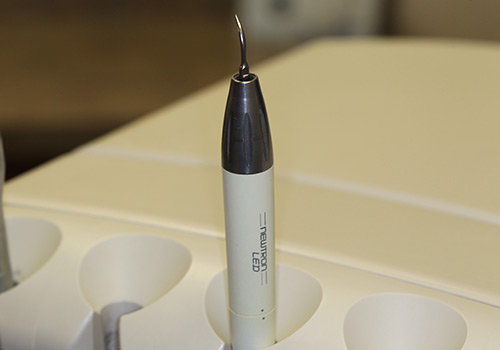
WHAT IT IS:
An ultrasonic scaler is used during the cleaning of teeth. It vibrates with a high frequency (20,000-45,000 times per second) allowing it to be effective cleaning off tough calculus on the teeth.
WHAT IT IS USED FOR:
Cleaning build-up of calculus and debris on the teeth during a cleaning
BENEFITS:
Teeth can be cleaned quicker and more thorough with an ultrasonic scaler. When used, it can eliminate most of the calculus and plaque allowing the hygienist to fine scale just a few areas with hand instruments for the best results.
Rotary Endodontic Handpiece
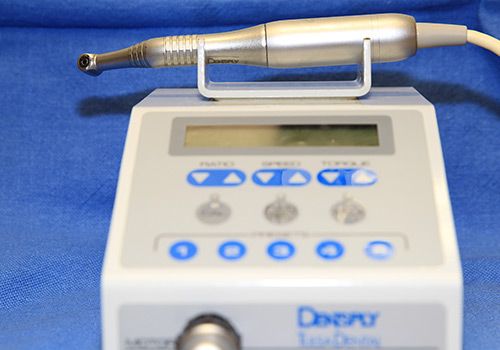
WHAT IT IS:
A handpiece or specialized drill that allows files, used in root canals, to be attached. The handpiece turns in slow smooth action allowing the tooth to be clean in an efficient way.
WHAT IT IS USED FOR:
This is used during root canals. Small files used to clean the inside of the tooth are connected to the rotary handpiece and help in the cleaning of the inside soft tissue and infection of a tooth.
BENEFITS:
More efficient way to clean the inside of the tooth. Its smooth action also helps in the success of the root canal procedure.
Apex Locator

WHAT IT IS:
An electronic piece of equipment that is used in root canals to determine the length of the roots. It uses radio waves and when you are at the tip of the root it gives an audible signal.
WHAT IT IS USED FOR:
Finding lengths of roots during a root canal. The length is then recorded and used throughout the procedure to keep consistent and make sure the tooth is completely cleaned.
BENEFITS:
It is easy to use and accurate. It increases the success of the procedure and reduces the time a patient is in the dental chair for a root canal.
Cordless LED Curing Light

WHAT IT IS:
A piece of dental equipment that can be used on several different dental materials that are set-up or curable by light.
WHAT IT IS USED FOR:
Polymerization (hardening) of light cure resin-based composites (fillings)
BENEFITS:
Lightweight, provides a predictable, uniform and reliable cure. It is good for hard-to-reach posterior teeth.
3D Scanning
WHAT IT IS:
3D Scanning is done by using an intraoral camera which captures thousands of high-resolution photos of the teeth and tissue that are put together as a three -dimensional image.
WHAT IT IS USED FOR:
Scanning is a great way to get information needed to make a crown or other dental prosthesis. A scan can be done instead of using impression material that is placed in the mouth and takes several minutes to set-up.
BENEFITS:
It is very accurate and precise. It is also quick and better for patients who have a gag reflex. Once the image is obtained, the whole process is digital to the final product. 3D scans can be printed or milled.
3D Printing
WHAT IT IS:
A process to create an item in an additive way using different resins. The process of three -dimensional printing involves creating several successive layers stacked on each other to print the desired object.
WHAT IT IS USED FOR:
Creating implant surgical guides, orthodontic appliances, dentures and other prosthetic devices.
BENEFITS:
The process of 3D printing is an efficient way of making dental prosthesis and guides. It is also very accurate. It is faster than more traditional process and has accurate fit for less adjustments.
3D Milling
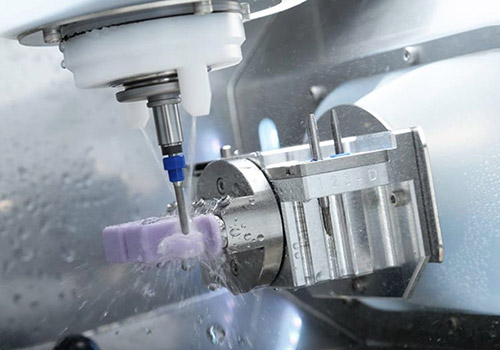
WHAT IT IS:
A milling machine is used to take a solid blank of material and shape it into a useable product for the dental patient.
WHAT IT IS USED FOR:
Used for making crowns, bridges, ortho aligners and retainers as well as different guides. Materials that are used range from acrylics to zirconium and titanium.
BENEFITS:
Milled products fit well because of the precision. They can also be done for a quick turn around for a patient. Implant prosthesis that are milled are also stronger than any other traditional methods.
Sand Blaster/Micro Pashaei
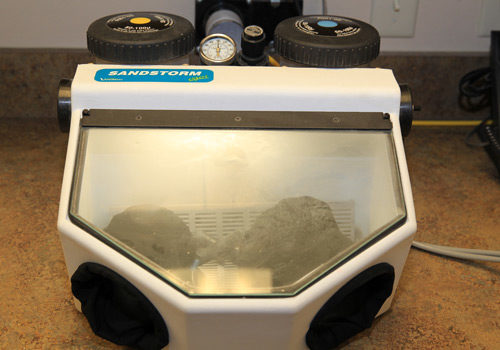
WHAT IT IS:
The sand blaster is an essential piece of dental equipment. It is a device that uses small particles of Alumina or glass and high pressure air to abrade the surface of crowns, inlays, and other restorations cleaning the surface and optimizing the surface for bonding.
WHAT IT IS USED FOR:
It is used to create rough textured surface for bonding crowns and other restorations to the tooth. By causing this kind of surface texture, the cement adhesives can bond to the surface with a higher bond strength.
BENEFITS:
Creates a long-lasting crown or other restoration for the patient
Surgical Implant Guides

WHAT IT IS:
Implant guides are created after careful planning the placement of an implant on software and using the patient’s 3D image (CBCT). The guide allows the most precise placement of an implant (tooth replacement). Angulation and depth of the implant are precise when using a surgical guide.
WHAT IT IS USED FOR:
Used to keep the angle and depth the same as what was planned on the computer.
BENEFITS:
Using a guide avoids errors in the placement and helps prevent any nerve or other structural damage. This also is an efficient way to place implants and confidence that it was placed right.
Orthodontic “Invisalign” Aligners

WHAT IT IS:
These are a series of clear trays or liners that are used to straighten teeth. Many companies make ortho-aligners and Invisalign is one of them.
WHAT IT IS USED FOR:
Used to straighten teeth to the most desirable esthetics and function.
BENEFITS:
Often costs less and no brackets or wires to be seen by others. The patient can remove them when eating and brushing.
Centrifuge
WHAT IT IS:
A machine using centrifugal force for separating substances of different densities.
WHAT IT IS USED FOR:
Use to separate the components of blood (red blood cells, platelets, and plasma) from each other. Used to make PRP and PRF.
BENEFITS:
The ability to use patients own blood for procedures to reduce healing time.
PRF Press
WHAT IT IS:
A metal box with a weighted lid to help form either a PRF plug or membrane.
WHAT IT IS USED FOR:
Use to shape PRF into socket-shaped fibrin clots to place in the alveolus (socket) following extraction. Removes the exudate from the clot and flattens to make a perfect 1mm thin membrane to cover a bone graft.
BENEFITS:
It forms the PRF into perfect socket shape or 1mm thin membrane and keeps the plug or membrane moist and protected until needed.
Loupes
WHAT IT IS:
It is eyewear with a magnification devise that dentists and hygienists use to magnify patient’s mouth, making their teeth and gums appear 3-5x larger and clearer.
WHAT IT IS USED FOR:
Improved vision of teeth and gums and helps the dentist and hygienists have better posture while working.
BENEFITS:
Enlarged view of treatment site results in more precise dental work. They have light for better illumination. The dentist is able to make more accurate and complete diagnoses and makes treatments as conservative as possible.
Dental Rat/ Foot Mouse
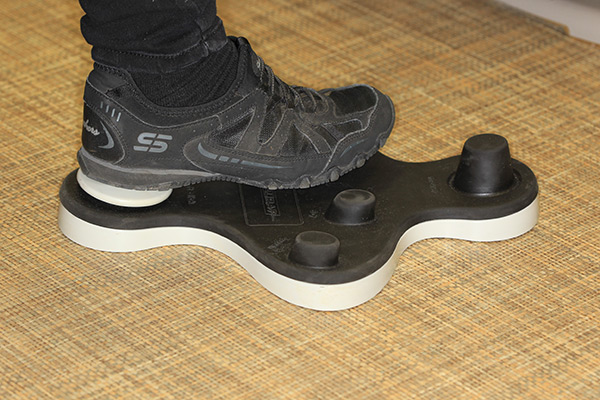
WHAT IT IS:
It is a foot-operated wireless periodontal charting input device.
WHAT IT IS USED FOR:
Used for running dental software (doing everything a hand mouse can do), used for perio charting, and running digital x-rays and intraoral camera.
BENEFITS:
It is an effective, consistent, hands-free periodontal charting solution. It allows hygienist to run software without needing and assistant and there is no risk of cross-contamination.
Autoclave
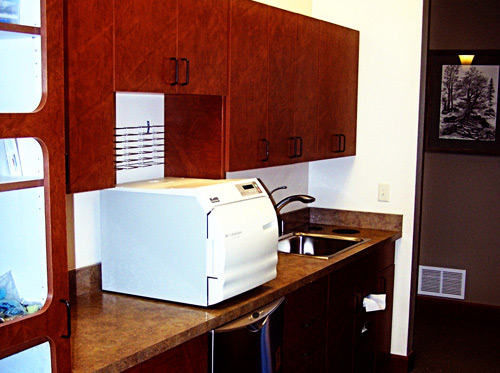
WHAT IT IS:
A pressure chamber using elevated temperature and high-pressure steam to sterilize dental instruments.
WHAT IT IS USED FOR:
Used to sterilize dental instruments after each use.
BENEFITS:
Helps with infection control.
Virtual Planning Software
WHAT IT IS:
Planning software has become important in the dental field. These software packages allow the clinician to accurately plan and predict the outcomes before even doing the procedures.
WHAT IT IS USED FOR:
Software is used to plan things like implant surgical guides, orthodontic cases, dentures and a host of other uses in dentistry.
BENEFITS:
Virtual planning allows good communication between the dentist and the patient. It gives both a visual of what things will look like. Gives more predictability to the procedure and makes things more efficient and precise when doing the procedure.
Electronic Dental Records
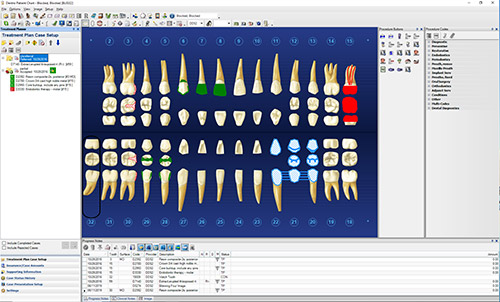
WHAT IT IS:
It is a chart of patient’s data arranged to present dental health information to the provider, other authorized uses and in some cases the patient.
WHAT IT IS USED FOR:
Used for clinical documentation and charting, managing referrals, creating treatment plans with cost estimates, medical history including allergies and medications, imaging, record of treatment and insurance details.
BENEFITS:
Records are legible and complete, easily transferred to specialist, x-rays and images are stored with documentation, keeps all of the patient’s information in one place, is more efficient and aids in decision making.
Patient Education Videos
WHAT IT IS:
Videos that educate patients on diagnoses, procedures, treatment options, prevention, and health and wellness.
WHAT IT IS USED FOR:
Used to increase learning so patients know what to expect during and after procedures, provide explanations of diagnoses and procedures and answer patient questions.
BENEFITS:
Gives patients understanding of procedures before proceeding, reduces anxiety and gives patients confidence in making decisions.
Ultrasonic Cleaning System
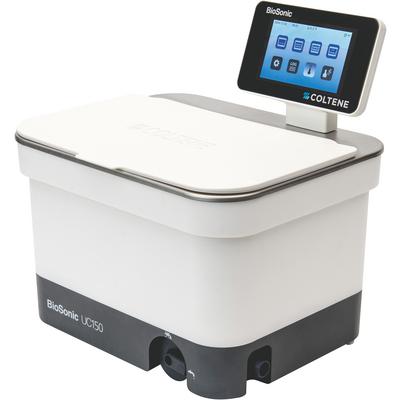
WHAT IT IS:
Ultrasonic cleaners use sound waves to rapidly vibrate a detergent or enzyme bath. This occurs as millions of tiny bubbles generated from the high frequency soundwaves, form and bust continuously in the liquid. When bubbles collapse, energy is released in the form of heat and pressure waves, breaking down the bonds that hold heavy debris on the instruments and prostheses.
WHAT IT IS USED FOR:
An ultrasonic is used in infection control. Ultrasonic cleaners are used to remove debris (blood, saliva and food particles) from dental instruments before sterilization. It can also be used to clean protheses such as dentures.
BENEFITS:
It reaches into tiny cracks and crevices and cleans without abrasion or harsh scrubbing.
Variable DC Power Supply (under 3D printing)

WHAT IT IS:
A variable DC power Supply is a DC power supply that allows you to easily adjust the
output voltage and current.
WHAT IT IS USED FOR:
A variable DC power supply is used to anodize titanium implant abutments two colors,
pink for under the tissue and gold under the crown.
BENEFITS:
Anodized implant abutments create a more aesthetic and natural look.
ZyberShield
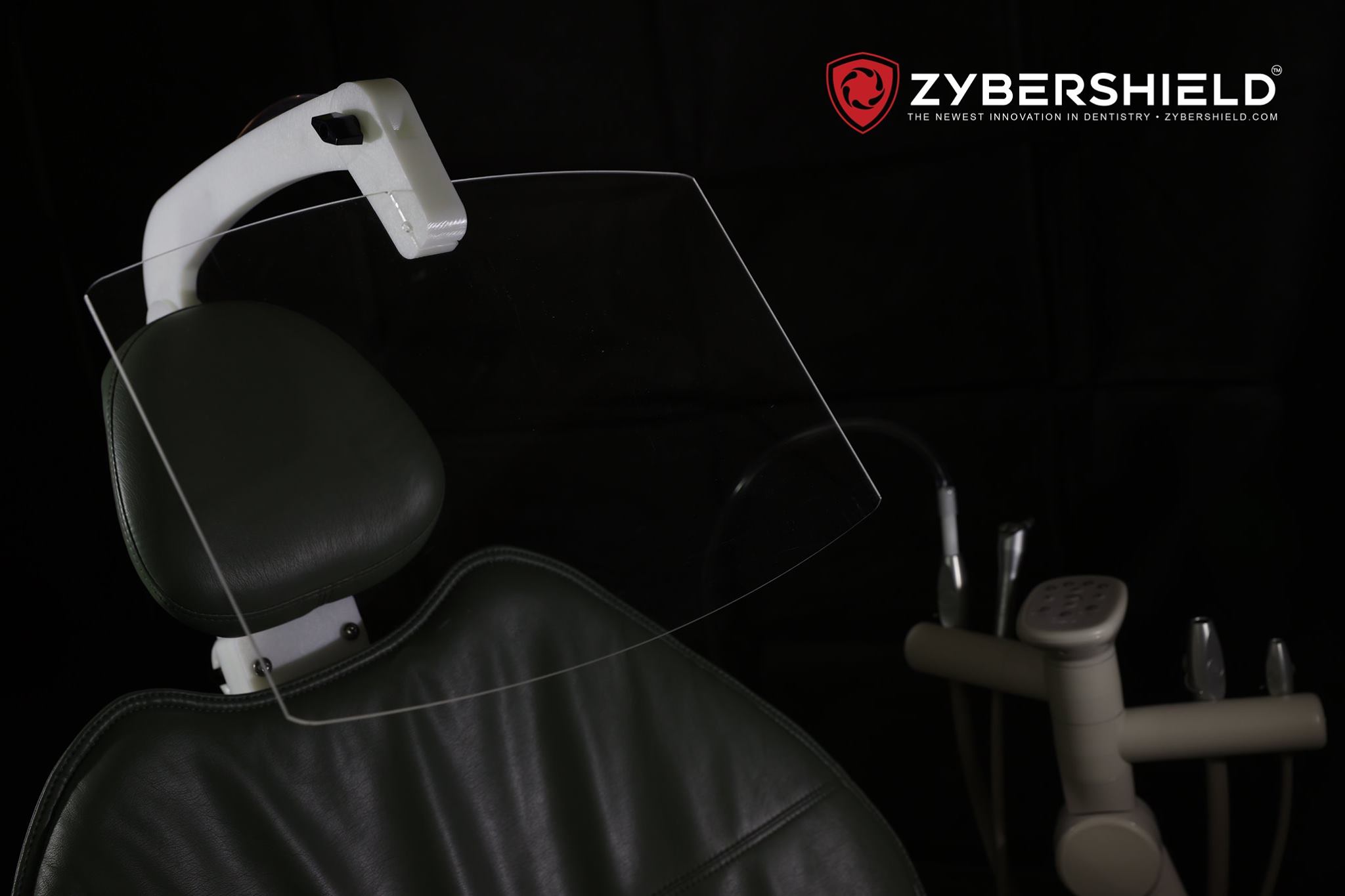
WHAT IT IS:
The ZyberShield is a clear, acrylic shield with integrated suction that provides a physical barrier between the provider and the patient.
WHAT IT IS USED FOR:
The ZyberShield is used to be a physical barrier that also has negative airflow and is used for infection control.
BENEFITS:
The ZyberShield protects both the patient and provider while procedures are being done.
Montana Mask
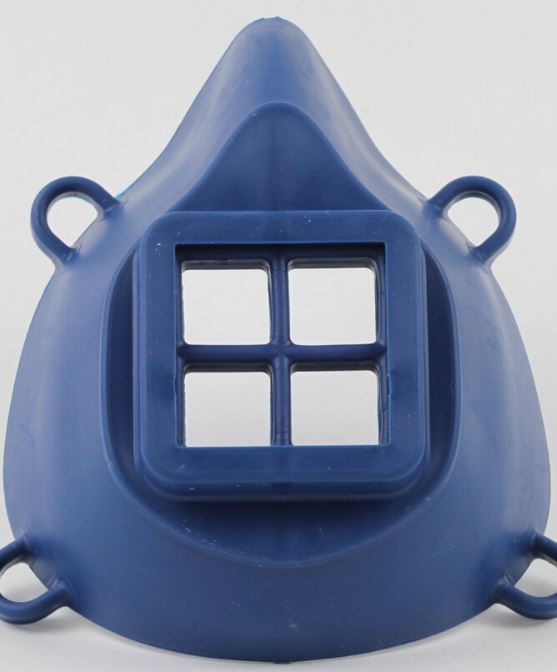
WHAT IT IS:
The Montana Mask is a highly effective filtration mask that was originally designed as a 3D printed mask. Now the masks are made of pliable injection molded plastics.
WHAT IT IS USED FOR:
The Montana Mask was designed to provide face masks during the COVID-19 pandemic. They are still used now for infection control personal protection equipment.
BENEFITS:
The Montana Mask is reusable and can be sanitized between uses. When fitted properly, the Montana Mask has a great seal.

